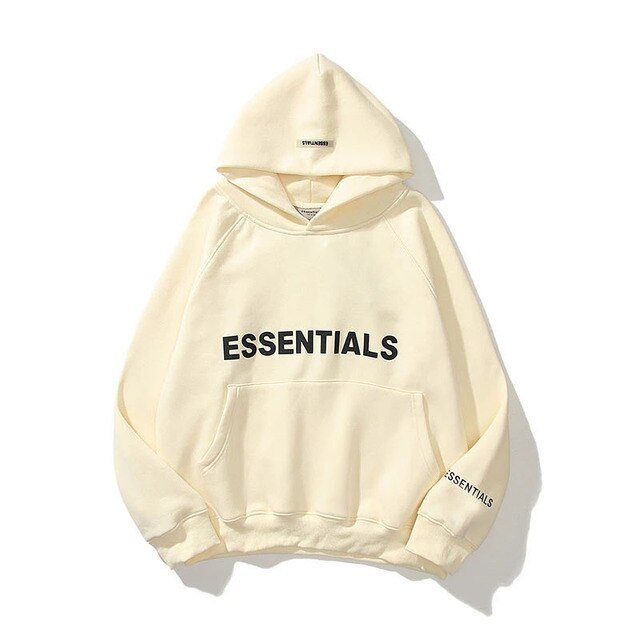
Accessories are the unsung heroes of personal style and functionality. They might be small, but they have the power to transform an outfit, enhance your daily experience, and make your essentials more efficient and expressive. Whether you’re accessorizing clothing, technology, or everyday carry Essentials Clothing items, making the right choices ensures both aesthetic appeal and practical use. Here’s a comprehensive guide to help you choose the right accessories for your essentials.
1. Understand Your Lifestyle and Needs
Before diving into trends or aesthetics, the first step is evaluating your daily lifestyle. Ask yourself:
-
What are your daily routines?
-
What environments do you spend the most time in—office, outdoors, gym, or social gatherings?
-
Do you prioritize function over form, or vice versa?
For example, if you’re often commuting or traveling, accessories like a durable backpack, protective phone case, or noise-canceling headphones are more than just add-ons—they’re essentials. Meanwhile, a person who attends formal events frequently might invest more in watches, belts, or jewelry.
2. Prioritize Functionality
Accessories should improve the usefulness or performance of your core essentials. For instance:
-
For tech essentials: A laptop sleeve with water resistance protects your device while making it easier to carry. Wireless earbuds with a strong battery life complement your phone or laptop seamlessly.
-
For fashion essentials: A belt not only holds your pants in place but can also tie an outfit together. A crossbody bag might be chosen over a tote for ease of movement.
Functionality also includes comfort. Sunglasses that block UV rays, scarves that keep you warm, or smartwatches that help manage your schedule—these accessories enhance your daily experiences without adding bulk or distraction.
3. Match Accessories to Core Items
Coordination is key. Accessories should complement, not compete with, your essentials. For example:
-
Color Harmony: Match the color of your accessories with your main wardrobe palette. Neutral colors like black, tan, navy, and grey offer versatility and can be mixed with various outfits.
-
Material Matching: Leather bags and watches pair well with leather shoes. Stainless steel accessories complement metallic devices like phones or tablets.
-
Style Cohesion: Minimalist outfits work best with clean, understated accessories. If your essentials are bold or patterned, opt for simpler accessories to balance the look.
A good rule of thumb is the “3-accessory rule”: wear no more than three standout accessories at a time to avoid visual clutter.
4. Invest in Quality Over Quantity
It can be tempting to stock up on inexpensive accessories, but low-quality items often wear out quickly and detract from your essentials. A high-quality accessory can last for years and make even a simple outfit or item look more premium.
Consider spending more on:
-
A durable watch or timepiece
-
Leather goods like wallets, belts, or bags
-
Tech accessories like cases, chargers, or styluses
-
Eyewear (prescription or sunglasses)
These are items you’ll use frequently, so they’re worth the investment.
5. Adapt to the Occasion
Different scenarios call for different accessories. Just as you wouldn’t wear sneakers to a wedding, you shouldn’t accessorize without considering context.
-
Work: Choose professional accessories—minimalist watches, leather briefcases, and neutral-toned items.
-
Casual outings: Go with fun, expressive items—colorful hats, canvas bags, or statement jewelry.
-
Travel: Look for lightweight, multifunctional accessories like foldable bags, universal adapters, or RFID-blocking wallets.
Adaptability is key. Choose accessories that can transition from day to night, or work to weekend, with ease.
6. Consider Seasonal Adjustments
Your accessories should align with the season for both comfort and style.
-
Winter: Opt for scarves, gloves, thermal socks, and darker-toned bags.
-
Summer: Switch to breathable hats, lighter fabrics, sunglasses, and waterproof items.
-
Rainy season: Choose waterproof bags, protective cases, and umbrellas.
Rotating accessories with the season not only protects your essentials but keeps your look fresh and appropriate.
7. Express Yourself
While practicality is important, accessories are also a fun way to express your personality. Use them to show off your tastes, interests, or even moods.
Examples:
-
A colorful phone case with artwork you love
-
Enamel pins on your backpack representing causes or fandoms
-
Statement earrings or bold necklaces
-
A smartwatch face that reflects your current vibe
Even subtle accessories, like a custom keychain or monogrammed wallet, can carry personal meaning.
8. Keep It Organized
No matter how stylish or functional your accessories are, they won’t serve you well if they’re disorganized. Maintain a system that keeps them accessible and in good condition.
-
Use organizers for jewelry, tech accessories, and cords.
-
Store seasonal accessories separately and rotate them as needed.
-
Clean and maintain items—polish leather, detangle cords, wash fabric pieces.
This ensures your accessories are always ready when you need them and extends their lifespan.
9. Don’t Be Afraid to Experiment
Trends and styles evolve, and so do our needs. If you’ve always stuck to one type of bag, try switching it up. If you usually go minimal, experiment with a bold scarf or colorful socks.
Accessories are the easiest way to experiment with new styles without committing to a full wardrobe change. And since they’re often more affordable than main items, they offer great bang for your buck in terms of style evolution.
Final Thoughts
Choosing the right accessories for your Essential Hoodie is a blend of practicality and personal taste. By focusing on your lifestyle, prioritizing quality, matching styles, and allowing room for expression, accessories become more than just add-ons—they become integral to how you present yourself and experience your day.
Remember, the right accessory isn’t just about looking good—it’s about enhancing what’s essential in your life.


